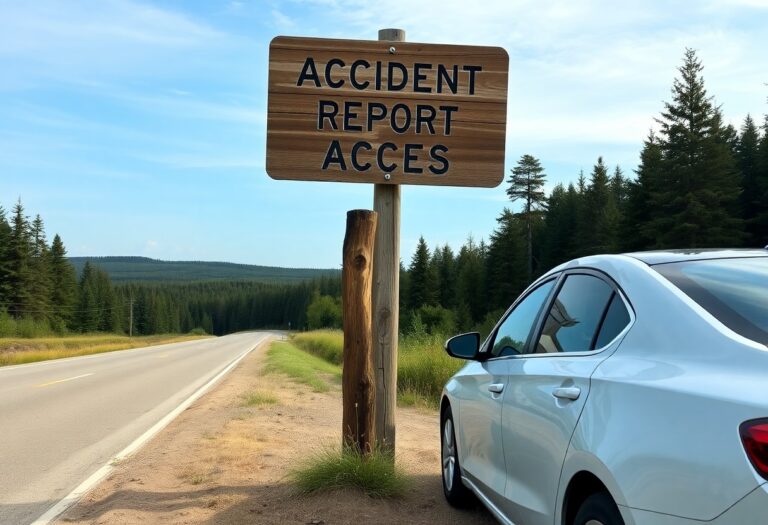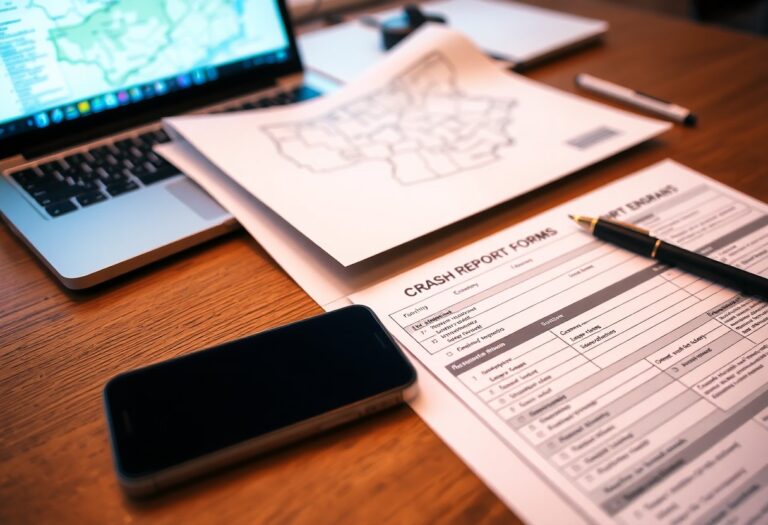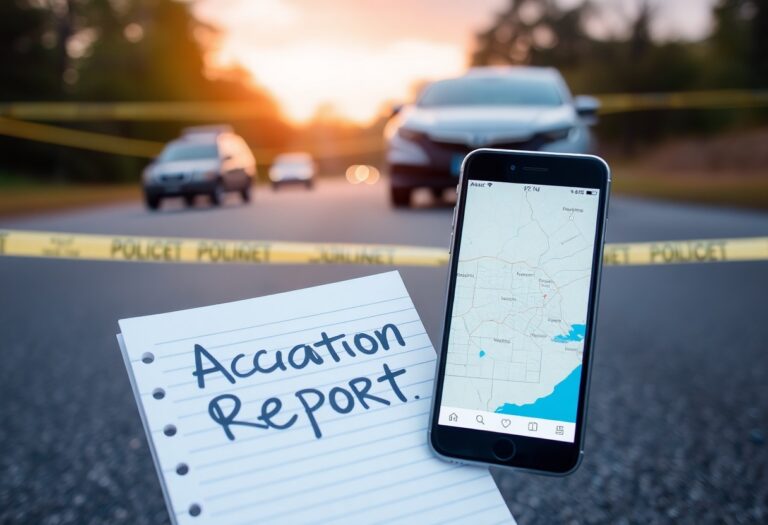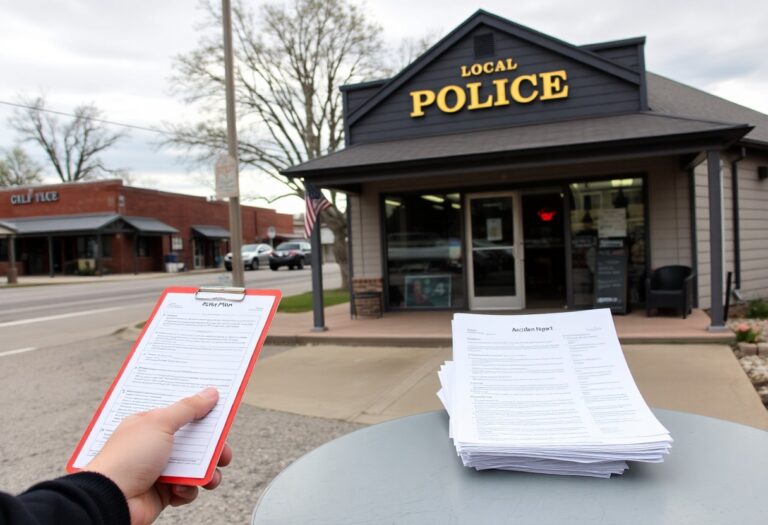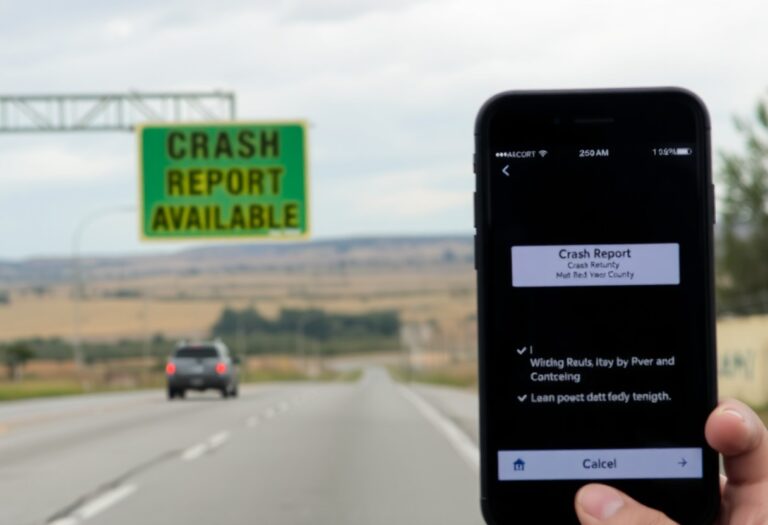Navigating the Crash Report Landscape in Stutsman County
In Stutsman County, obtaining your crash report can be a straightforward process if you’re equipped with the right knowledge. With over 600 reported crashes annually, understanding where to start is imperative. You can submit a request for your report through the North Dakota Highway Patrol website or your local law enforcement agency. Be prepared to provide details such as the date, time, and location of the incident, along with involved parties’ information. Fees for obtaining reports typically range from $5 to $10, depending on the nature of the request. Knowing these details can save you both time and frustration.
Essential Policies Governing Crash Report Access
North Dakota State Laws on Public Records
In North Dakota, public records laws facilitate transparency, allowing you to access various documents, including crash reports. Under North Dakota Century Code § 44-04-18, accident reports are classified as public records, and you have the right to request them. Some details may be redacted for privacy, particularly concerning sensitive information like personal identifiers or minors involved in the accidents.
Stutsman County Regulations and Procedures
In Stutsman County, specific procedures guide you in obtaining crash reports, including filling out a request form and providing requisite information. You may submit your request in person or via mail to the Stutsman County Sheriff’s Office, where dedicated staff will assist you. Generally, requests are processed within a few business days, ensuring you receive the needed information promptly.
The procedures for accessing crash reports in Stutsman County involve several straightforward steps. Upon initiating your request, you’ll need to include pertinent details such as the date and location of the incident, along with your contact information. It’s advisable to check if there are any applicable fees, and be prepared to present valid identification to verify your identity and purpose for requesting the report. This ensures both compliance with local regulations and the protection of individual privacy rights.
Step-by-Step Process for Requesting Your Crash Report
| Step | Description |
|---|---|
| 1 | Gather Necessary Information |
| 2 | Submitting Your Request: Channels and Methods |
| 3 | Tracking Your Request Status |
Gathering Necessary Information
Before you initiate the request for your crash report, ensure you have all pertinent details at hand. This includes the date and location of the incident, your full name, and any involved parties’ information. Additionally, having your driver’s license number and the report number, if available, will streamline the process, enabling you to receive accurate information promptly.
Submitting Your Request: Channels and Methods
You can submit your crash report request through various channels, including online forms, mail, or in-person visits to the relevant law enforcement agency. Each method has specific guidelines, so check the agency’s website for detailed instructions. Some reports may also be accessible through a secure portal that may require you to create an account.
The easiest way to make your request is often via the agency’s online portal. After entering your details, you’ll be able to track the progress of your request in real-time. Alternatively, if you choose to send your request by mail, ensure you include all necessary documentation and clearly state your purpose. In-person requests can provide immediate feedback, allowing you to ask questions directly and resolve any issues at once.
Tracking Your Request Status
Once you have submitted your request, it’s beneficial to track its status. Many agencies provide a tracking service, allowing you to check the progress online. If you’ve submitted your request by mail or in person, keep any documentation related to your submission handy to reference during follow-up inquiries.
Staying updated on your request status can prevent unnecessary delays. Use any confirmation numbers or references provided upon submission to monitor your request. If you don’t see an update within the expected timeframe, reach out to the agency directly via their specified contact method. Prompt follow-up can help clarify any potential issues that may arise during processing.
Understanding the Information Contained in Crash Reports
Crash reports serve as vital documents capturing the specifics of automotive incidents. These reports present a comprehensive overview, detailing the circumstances, injuries, and property damage involved in the accident. Familiarity with this information empowers you to navigate insurance claims, legal proceedings, and safety assessments more effectively.
Key Elements: What’s Included in a Report
Each crash report typically includes the date and time of the incident, location, involved parties, vehicle information, witness statements, and a narrative from the responding officers. Additionally, accident diagrams may illustrate the event’s dynamics. Understanding these components allows you to identify vital facts pertinent to your situation.
Interpreting the Data for Your Needs
Analyzing crash report data requires a focused approach. You should extract relevant details to support insurance claims, legal proceedings, or personal insights into road safety. Look for discrepancies or critical factors, such as driving conditions or contributory negligence, which could impact liability determinations.
When interpreting the data, consider prioritizing elements that directly relate to your specific inquiry. For instance, if you’re determining fault, pay close attention to officer observations and witness accounts, as these can provide pivotal insights. Leveraging the report’s numerical data, such as the severity of injuries documented or the total property damage incurred, can bolster your case in discussions with insurers or legal counsel. Each detail serves a purpose, enhancing your understanding of the incident’s broader implications.
Common Challenges and Solutions in Requesting Reports
Requesting crash reports can present several challenges, from denied requests to delays in processing. Understanding these hurdles and knowing how to navigate them is vital. Many individuals find themselves frustrated by the bureaucratic red tape, which can slow down their access to important information. You can ease your path by familiarizing yourself with common issues and their potential solutions, ensuring that you receive your report without unnecessary complications.
Denied Requests: Reasons and Remedies
It’s common for requests to be denied due to incomplete information or insufficient authorization. You may find that law enforcement agencies refuse access if the report is still part of an ongoing investigation. To remedy this, ensure that you provide all necessary documentation, including case numbers and your relationship to those involved in the crash, to bolster your chances of approval.
Navigating Delays: Tips for Expedited Processing
Delays in processing your crash report can occur for various reasons, including high volumes of requests or incomplete applications. To expedite your request, ensure that all required information is included from the outset. Additionally, it helps to follow up with the requesting agency via phone or email, clearly stating your needs. This proactive approach can often highlight your request and push it through the queue faster.
- Include all required documentation to avoid unnecessary delays.
- Follow up regularly to indicate urgency and commitment.
- Communicate clearly with agency staff about your request.
By being organized and informed, you can effectively navigate potential delays. Prepare a checklist of needed documents and make initial contact with the agency to confirm your understanding of the process. This forethought not only streamlines your request but also places you in a better position to handle any unexpected hurdles. Assume that taking these steps can significantly shorten the time it takes to retrieve your crash report.
- Be proactive in communication to reinforce the urgency of your request.
- Double-check submission methods to ensure proper delivery of your request.
- Maintain a polite demeanor in interactions with agency staff for better rapport.
How Crash Reports Affect Insurance Claims and Legal Proceedings
Accident reports serve as key documents in the resolution of insurance claims and legal disputes. Insurers often rely on the information within these reports to determine fault and evaluate damages when processing claims. The absence of a police report or discrepancies can lead to delays or denials, impacting your compensation significantly.
The Role of Crash Reports in Accident Claims
Crash reports provide an official account of the incident, including details like the time, location, and parties involved. This information serves as a foundational element for your insurance claim. Insurers assess these reports to establish liability and validate your narrative, ensuring that you receive the appropriate support for your claim.
Legal Implications: Using Reports as Evidence
In legal contexts, formal accident reports can be pivotal evidence in court. They encapsulate eyewitness accounts, citations, and officer observations that can influence the outcome of a case. If you’re pursuing legal action, the accuracy and detail provided in a crash report can sway judges and juries toward a favorable verdict.
The value of crash reports in legal proceedings cannot be overstated. If you find yourself in a dispute over fault or damages, these documents can substantiate your claims and provide a basis for your argument. Specific details, such as the presence of traffic violations or weather conditions, can further bolster your case. Engaging a legal professional can help navigate these complexities, ensuring that the information from the crash report supports your position effectively.
Conclusion
With these considerations, you can confidently navigate the process of requesting crash reports in Stutsman County, North Dakota. Understanding the requirements and procedures ensures that you obtain the necessary information efficiently and without complications. Whether you are involved in an incident or need records for other reasons, following the guidance provided will help streamline your experience. Don’t hesitate to reach out for assistance if needed, as having the right information at hand can make all the difference in your endeavors.







